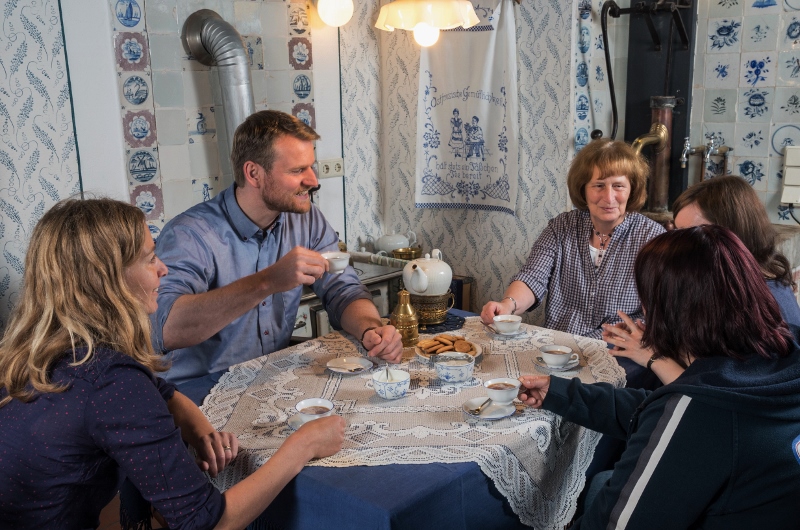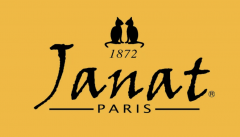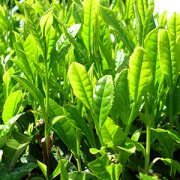The Tea Culture of the World German Tea Culture what brand of tea do Germans like to drink
German tea culture
When it comes to European tea culture, the first thing most people think of is the global afternoon tea culture in Britain, but very few people know that Germany is also a place where tea culture prevails, especially on the seaside in the northwest corner of Germany, where Ostfriesen is the favorite tea-drinking area in Germany. According to the German Tea Association (German Tea Association), the average person here drinks 300 liters of tea a year.
Three hundred liters = about 500 pots of tea
One person drinks 1 or 2 pots of tea a day, which is similar to that of a Chinese.
In East Freesland, there is a kind of tea culture listed as intangible cultural heritage, that is, "East Friesland tea" belongs to the unique tea culture, which is similar to British cream tea at first glance, but the difference between them is quite different. This chapter introduces East Frisian tea, there are important steps, ritual habits of knowledge!
East Freesland tea
East Frisia in East Friesland, Germany, a mysterious town with a unique tea culture, did ordinary business with the Netherlands at that time, so it also learned to drink afternoon tea. But also because during the great voyage, tea was very expensive, and not many people could drink it this way. compared with the later German herbal tea, the mixed tea from China and India was more precious, and even had its own unique formula.
If you buy black tea in Germany, you can buy this unique German black tea formula tea, several kinds of supermarket brands can be found.
The tea used in "East Frisland Tea" is similar to English breakfast tea, both of which are blended teas and are made from a mixture of various black teas. The main substrate of East Frisilan tea is Assam tea, which accounts for 50%, while the remaining 50% of the tea is from Sri Lanka, Darjeeling and other producing areas.
The alias East Frisian blend with the richest mixture
This is a mixture of black tea. Assam tea has a strong taste with a slightly sour taste of fermentation, and it can only be called "real East Felicia tea" when mixed in East Friesland province. It is not suitable for water quality with high lime and high hardness, but only for water with lower calcium carbonate content. Due to the long tradition of tea drinking and high consumption, there are still a number of tea companies in the region, and if they go to Germany, they must visit this legendary town.
The Origin of German Tea ceremony
In the early 17th century, Dutch merchants brought tea to Europe. The Teetied ceremony of the East Friesland tea ceremony has a history of nearly 400 years since the Great Navigation period. It was precisely because of the obsession with tea at that time that the supply of tea was in short supply, so the King of Prussia in Germany wanted to promote beer and herbal tea culture as an alternative, in order to avoid a large flow of money to the East India companies of various countries.
Listed in the German UNESCO Intangible Cultural Heritage Project in 2016.
But in fact, East Friesland, which is geographically close to the Netherlands, has been quietly engaged in smuggling business. Although tea was first managed as a drug at that time, the culture of high-class aristocracy drinking tea and tea was quickly integrated into the daily life of the local people, and become extremely dependent! Even against the orders of the state, the people have to defend the right of citizens to drink tea, keep secret tea parties run behind the government's back, and on May 11, 1779, the whole estate wrote a letter to the German central government, justifiably protesting that tea life was deep-rooted and that the government should not restrict and tax them from drinking tea.
In the past, in order to make people drink less tea, heavy taxes were paid, and in order to rationing fairly, there were seasoned spices, sugar and tea, which were made into tea slices to eat. (from East Friesland Tea Museum)
In East Friesland, there is a museum dedicated to tea culture, including local teapots and tea utensils in addition to the history of local tea culture. the local porcelain is decorated with red roses and cobalt blue straw flowers (known as Frisian blue). There are a large number of showcases full of teapots, teacups and saucers in the museum. If you want to learn more about the tea culture of East Friesland and experience a perfect tea ceremony, you should go here.
The earliest sight of rich people drinking tea in Germany (taken from the East Friesland Tea Museum)
One of the milestones, turning expensive tea into rations and tea-grade products for people's livelihood, was the first batch of East Friesland tea that was later billed as authentic in 1806 by Johann Bainting at his grocery store in Leer. And laid a good foundation for his company, which is currently one of the three major tea merchants in Germany.
Germans love tea more than you think, and they won't refuse an invitation, which is considered polite. (from East Friesland Tea Museum)
A famous brand of tea merchants in Germany
B ü nting
Thiele
Onno Behrends (common in local fame)
Teekanne (most famous)
Me ú mer (Mei Si Tea)
Teekanne (German teapot, the first company to mass-produce tea bags)
In the German supermarket, the tea bag has a super variety of choices, which is the grade of a whole wall, which shows how important the demand for tea goods is to the Germans.
Among the above-mentioned brands, only B ü nting, Teekanne and me ²mer have been expanded internationally, and the rest are sold in the local German market. In East Friesland, several local residents have also set up personal companies to make tea in their own homes.
Although black tea is the main type of tea drunk in Germany, most of them are very fragmented black tea categories. (from East Friesland Tea Museum)
East Friesland is so obsessed with tea that they still insist on drinking tea even though coffee is popular in European countries. Tea is not only a daily drink for them, but also an important etiquette for entertaining distinguished guests. Whenever distinguished guests visit them, they will make a cup of strong tea to show their hospitality, and because such strong tea has become a feature of East Friesland.
The preparation of tea
East Frisian tea has a very special tea ritual. If you want to experience this ancient and wonderful ceremony, you must first prepare the following utensils:
Porcelain tea set
Mixed, loose tea (Assam tea as the base)
Rock sugar
Cream
His name is Kluntje Krutyer, big rock candy.
First put large chunks of thick rock sugar into a cup (they call it Kluntje Krutyer). When hot tea needs to be poured on it, it will crack like an iceberg is dissolved, and will make a slight noise.
Put the spoon in front of the cup. If the spoon is put in the cup, it means don't drink it. (from East Friesland Tea Museum)
Tea-making ceremony process
Step 1. Warm the pot with hot water and keep it warm, usually with a large porcelain pot of more than 1 liter.
Step 2. Take about 10-15 grams of tea
Step 3. Pour in half a pot of hot water. Remember that this is only half a pot.
Step 4. Put it in the heat preservation heating furnace, and have seen larger teapots stacked to keep heat by water insulation.
Step 5. Soak the tea for about 3-5 minutes, with a concentration.
Step 6. Add hot water to a full pot to dilute before drinking it.
Step 7. Pour it to the guest with a filter

Pour into the previous focus
The first is to put Kluntje (rock sugar) into the cup.
Pour hot tea to make the rock sugar crack.
Then use a cream spoon to drop a few drops of cream
No stirring! No stirring! No stirring!
Divide it into three mouthfuls and drink three drinks
Then there is the most special technique of East Frisilan tea, which takes some cream from the cream spoon and slides the cream carefully from the edge of the cup into the tea. after the cream touches the bottom of the tea, it will faint like a mushroom cloud, which is the so-called "tea cloud".
Legend has it that it should be carried out counterclockwise to symbolically stop time.
Traditionally, tea is drunk without stirring. Therefore, first the black tea flavor on the edge of the cup fills the mouth and nose, then the milk flavor in the middle of the cup, and finally the sweetness of the sweetened tea at the bottom of the cup.
There is an argument for the practice of not stirring tea. In the past, people wanted to use expensive rock candy for as long as possible. Stirring will lead to its rapid dissolution, so do not stir to prolong the time. However, modern scholars have regarded this behavior as a cultural ritual of tasting tea, which becomes too sweet due to stirring, and the release of a large amount of rock sugar will lose its unique hierarchical flavor.
In addition, there is a very special ceremony for East Friesland tea. for each tea gathering, participants are required to drink at least three cups of tea. Three rounds of tea, by upside down the cup on the saucer, or put the spoon in the cup, indicating that there is no need to pour tea, has been full.
Important Notice :
前街咖啡 FrontStreet Coffee has moved to new addredd:
FrontStreet Coffee Address: 315,Donghua East Road,GuangZhou
Tel:020 38364473
- Prev

Black tea bag the difference between imported high-grade black tea and Chuanning black tea bag of ten famous brands Janat
Easy to get French tea flavor Janat was founded in 1872, so far there are only two physical stores in the world, namely, Paris in France and Ginza in Japan, but it is a well-known brand and is crazy about Japanese white-collar workers. Janat's LOGO design has a lovely story. The two cats above are Sam and Beau. Is the founder Janat Dores (Janet Dorres)
- Next

The efficacy and function of green tea taboo constipation can you drink green tea? Three methods of brewing green tea
Green tea is made from the leaves of tea trees and originated in China. The difference between green tea and black tea and oolong tea is that as long as black tea and oolong tea, the leaves of green tea will not wither, ferment and oxidize. It is often associated with spice additives such as jasmine, orange peel and tropical dried fruit. With so many tastes and varieties to choose from, green tea has become one of the most popular varieties of tea consumed in the United States.
Related
- Beginners will see the "Coffee pull flower" guide!
- What is the difference between ice blog purified milk and ordinary milk coffee?
- Why is the Philippines the largest producer of crops in Liberia?
- For coffee extraction, should the fine powder be retained?
- How does extracted espresso fill pressed powder? How much strength does it take to press the powder?
- How to make jasmine cold extract coffee? Is the jasmine + latte good?
- Will this little toy really make the coffee taste better? How does Lily Drip affect coffee extraction?
- Will the action of slapping the filter cup also affect coffee extraction?
- What's the difference between powder-to-water ratio and powder-to-liquid ratio?
- What is the Ethiopian local species? What does it have to do with Heirloom native species?

